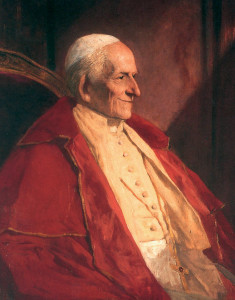
Pope Leo XIII
Pope Leo XIII taught, with the full authority of a papal encyclical, that the entire month of March should be devoted to Joseph. He urged the Church to give even greater solemnity to Joseph’s Feast on March 19, to promote greater devotion to Joseph among all the faithful throughout the entire month, and at least to observe a solemn triduum in Joseph’s honor March 17 to 19. In his important, often overlooked, encyclical Quamquam Pluries of August 15, 1889, Leo XIII gave us a vision for the third millennium and opened the door to the theology of the New Evangelization.
In Jesus of Nazareth, Volume I, the first writing published after he became Pope, Benedict XVI begins with this biblical symbolism: “Jesus is the new Moses.” This symbolic approach to the person of the Messiah is helpful, and Benedict develops it eloquently without claiming it to be exclusive.
Benedict is well aware of the more traditional symbolism, based on Chapter 5 of St. Paul’s Epistle to the Romans: “Jesus is the new Adam.”
Divine Revelation has always used symbolism to communicate divine realities in human language. We say “Jesus is the new Adam” and “Jesus is the new Moses” without contradiction: we understand that these types are not mathematical formulas, but are useful to give us insight into revealed mysteries of our Faith.
Jesus, Pope Benedict has taught repeatedly, completes and perfects all the biblical types; and Jesus’ Sacrifice on Calvary fulfills and perfects all the previous sacrifices offered by the People of God beginning with Cain and Abel.
The entire month of March should be devoted to St. Joseph; the month of May is devoted to Our Lady, and the month of October is the month of the Holy Rosary. These devotions are filled with biblical types. “Jesus is the new Moses,” “Jesus is the new Adam,” and “Mary is the new Eve.” St. Paul writes to the Galatians several years before the fall of Jerusalem in 70 AD (Galatians 4:22-31): “Abraham had two sons… now this is an allegory [a biblical figure]… Hagar represents Sinai… it corresponds to the present Jerusalem… but the Jerusalem above is freeborn, and she is our mother…. Now you, brothers, like Isaac, are children of the promise… Therefore, brothers, we are children not of the slave woman but of the freeborn woman.”
St. Paul names Abraham, Hagar, and Isaac in this “allegory,” and we know from the context that the “freeborn woman” is Abraham’s wife, Sarah, the mother of Isaac. We also know that this allegory is not exclusive, and Catholics have always believed that the Blessed Virgin is our true mother in Faith (given to us by Jesus from the Cross, cf. John 19:27). This “allegory” is fulfilled and perfected in the Mother of Jesus; and we understand the “Jerusalem above” (verse 26) as another biblical type of Jesus’ Virgin Mother. (See also “the new Jerusalem coming down from heaven,” Revelations 3:12 and 21:2, 10).
The ancient Roman Canon of the Mass identifies Abraham as our “Father in Faith.” For the New Evangelization in the third millennium, Pope Benedict exhorts us to renew our familiarity with the Book of Genesis to gain deeper insight into the types we use to teach the mysteries of our Faith. Abraham is an historical person; and he is a biblical type (this is the sense of “sacrament” — a physical, historical reality that is also a sign of a greater reality). Abraham is the husband of Sarah and the father of Isaac. He is “The Patriarch” of Israel; and he is “our Father in Faith,” according to the Roman Canon. The biblical symbolism here is not exclusive: Abraham is also a type of Joseph of Nazareth. In other words, Joseph is the new Abraham.
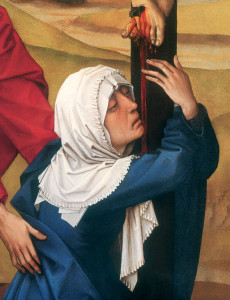
The Crucifixion Triptych (detail), c. 1445 by Rogier van der Weyden.
We say “Jesus is the new Adam, and Mary is the new Eve.” It is equally helpful for the New Evangelization to include: “Joseph is the new Abraham.” We understand St. Paul’s Epistle to the Galatians as “allegory” where Isaac is a type of Jesus: Jesus is the definitive fulfillment who is Sacrificed once and for all. The freeborn woman, the Jerusalem above, is a type of Mary, the mother of the new Isaac; and Abraham is a type of Joseph, the husband of Mary and human father of the new Isaac. These biblical types are not exclusive.
Chapter 11 of the Epistle to the Hebrews, in a litany of faithful types, states: “By faith Abraham, when put to the test, offered up Isaac.” (Heb 11:17) We see here and in Galatians how the use of biblical types are not exclusive. Abraham “reasoned that God was able to raise even from the dead, and he received Isaac back as a symbol” [parabolam in Latin]. (Heb 11:19) Abraham, Sarah, and Isaac are historical persons, and the Epistle here is describing historical events — events that are also signs or “symbols” — of a greater reality. In this “sacramental” sense, Sarah is a symbol of the Blessed Virgin; Isaac prefigures Jesus; and Abraham prefigures Joseph of Nazareth.
We might say the most important event in the history of the People of God before the Birth of the Messiah, was the first Passover and Exodus; and Jesus is the new Moses. Again, we see that this biblical typology is not exclusive: when we go deeper into the mystery of Salvation we see the One Holy Sacrifice as the central event, and it is prefigured by Abraham offering his beloved son (Genesis 22:1-18). Isaac was old enough to give consent, and did consent, to the sacrifice. In this sense — and in the sense of Galatians — Jesus is the new Isaac. The deeper insight for the third millennium concerns the role of Joseph and Mary in offering the Son to the Father.
The Presentation in the Temple (Luke 2:22-40) was necessary in God’s mysterious Providence. The Presentation in the Temple reveals that Joseph and Mary freely offer their Son to the Father. Of course, the consent of Joseph and Mary is secondary to the consent of Jesus Himself.
The Blessed Mother is present on Calvary when this offering is completed. She visibly — and tacitly — consents to the will of the Father; Mary’s will is united with Jesus’ will in doing the will of the Father. Joseph is not physically present on Calvary but he is present morally and spiritually: the sacred, chaste, matrimonial covenant union of Joseph and Mary is not interrupted by death. The woman who is never touched by any stain of corruption remains in eternal union with her husband, Joseph. In this sacred, chaste, matrimonial covenant union of Joseph and Mary, we see how Joseph’s consent is included with Mary’s consent on Calvary.
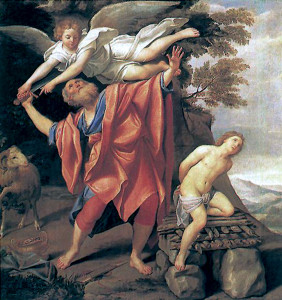
The Sacrifice of Isaac by Domenichino (1627/28) .
The entire Family of Nazareth — Jesus, Mary and Joseph — are united in doing the will of the Father from the moment of Mary’s “Fiat.” This Holy Communion of Jesus, Mary and Joseph is manifest in the Presentation, as the Son is offered to the Father by the Family United. This Holy Communion grows deeper and stronger as the the Child grows. This Holy Communion — offering the Son to the Father — is stronger on Calvary than it was in the Presentation in the Temple. It is perfected on Calvary.
Soon after Pope Leo’s 1889 encyclical on Joseph, Pope St. Pius X published a prayer asking us to pray daily for Joseph’s intercession in all our work, especially the work of the Church. John Paul II’s motto, “Totus Tuus,” is a short form of total consecration to Jesus through Mary. The prayer written by St. Pius X, at the beginning of the 20th century, ends with a simple formula of consecration to Jesus through Mary with Joseph: “All for Jesus, all for Mary, all to imitate thee, O Patriarch St. Joseph! This shall be my motto for life and eternity. Amen.”
“This shall be our motto for life and eternity,” St. Pius X asks us to pray daily.
Creation begins with a married husband and wife, and redemption begins with a married husband and wife. This is the Plan from all eternity. The New Evangelization needs Joseph!
In the One Eternal Holy Sacrifice offered daily on altars throughout the world, the Holy Communion of Jesus, Mary and Joseph — the Holy Family — continues to grow as more members are added to the Family of God. Proclaiming that “Mary is our Mother in Faith, the new Sarah, and Joseph is our Father in Faith, the new Abraham” draws us into more profound participation in the Blessed Sacrament. Jesus is our brother, and we are members of the Family of Nazareth united in offering the One Holy Sacrifice. This Holy Communion with Jesus, Mary and Joseph is the source and center of our Faith. Let us pray daily with Pope Saint Pius X:
“All for Jesus, all for Mary, all to imitate thee, O Patriarch St. Joseph! This shall be my motto for life and eternity. Amen.”

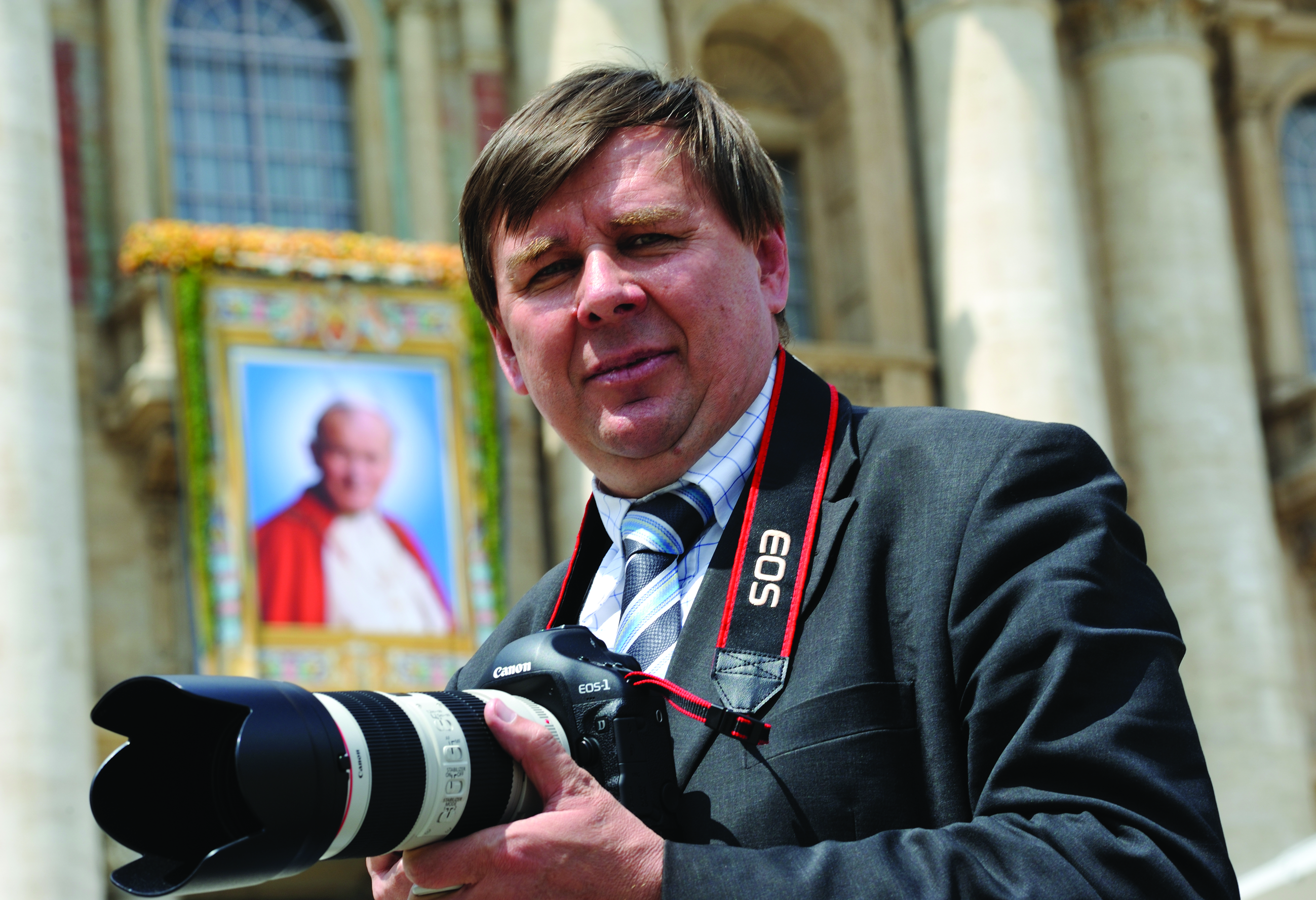
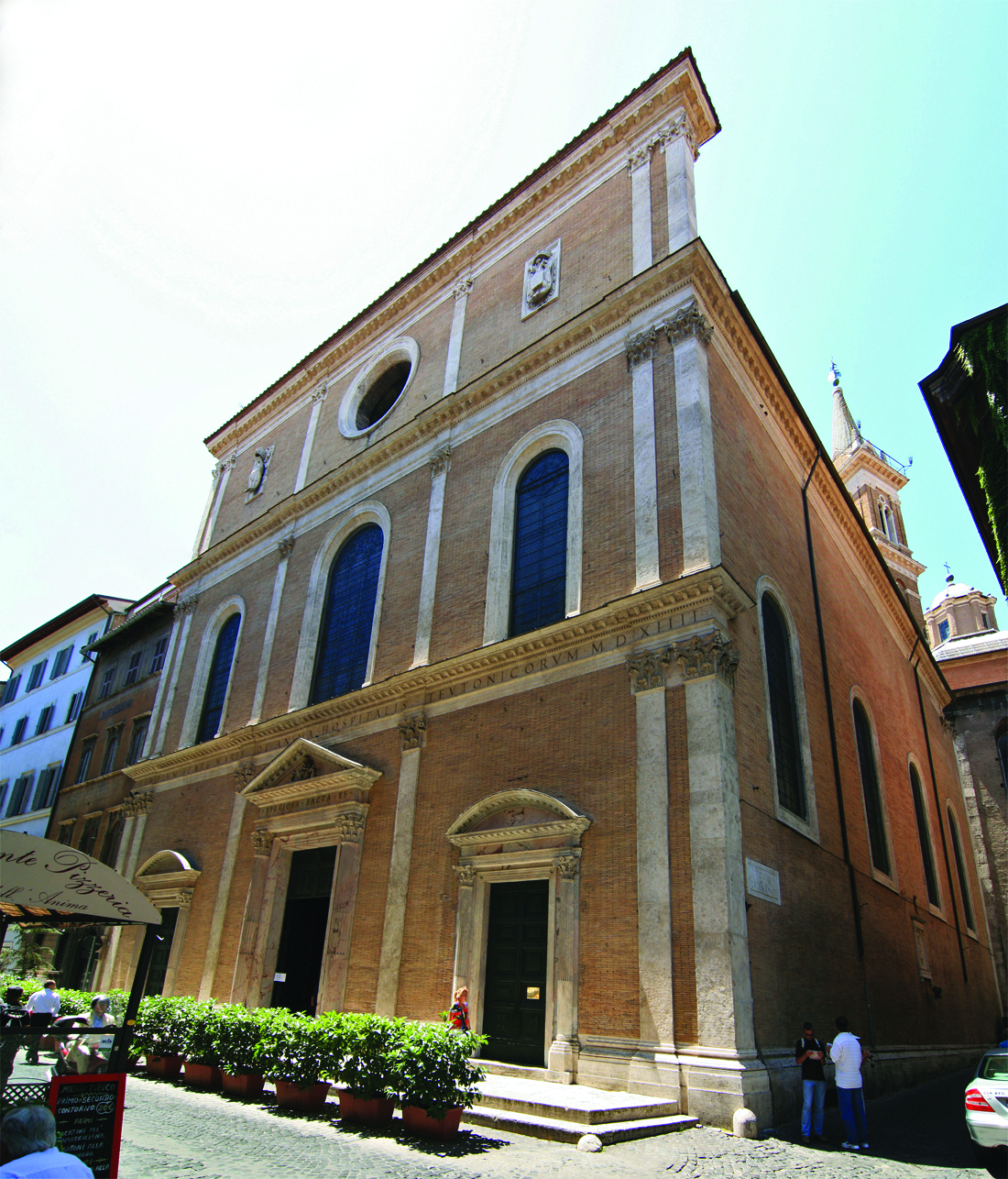
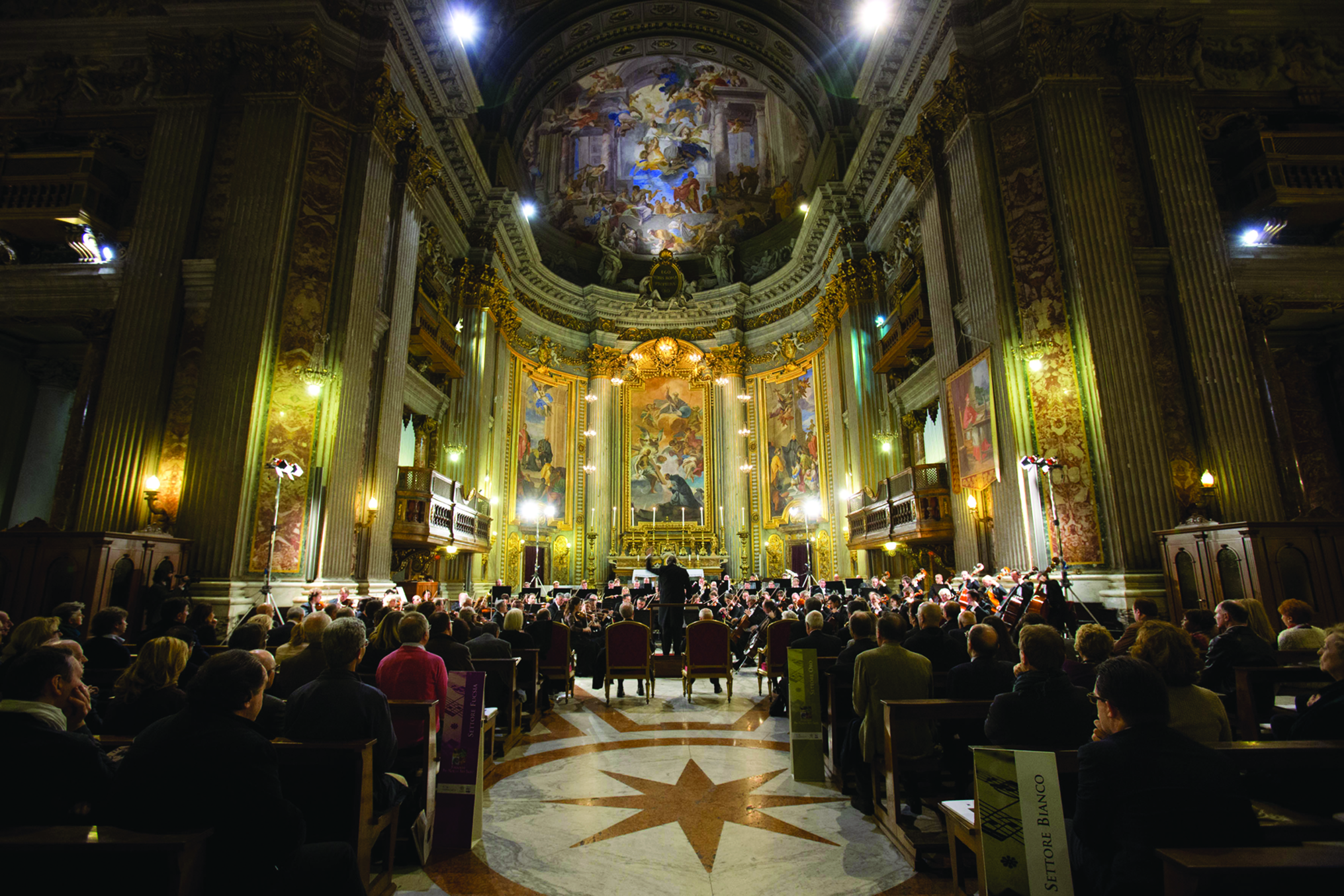
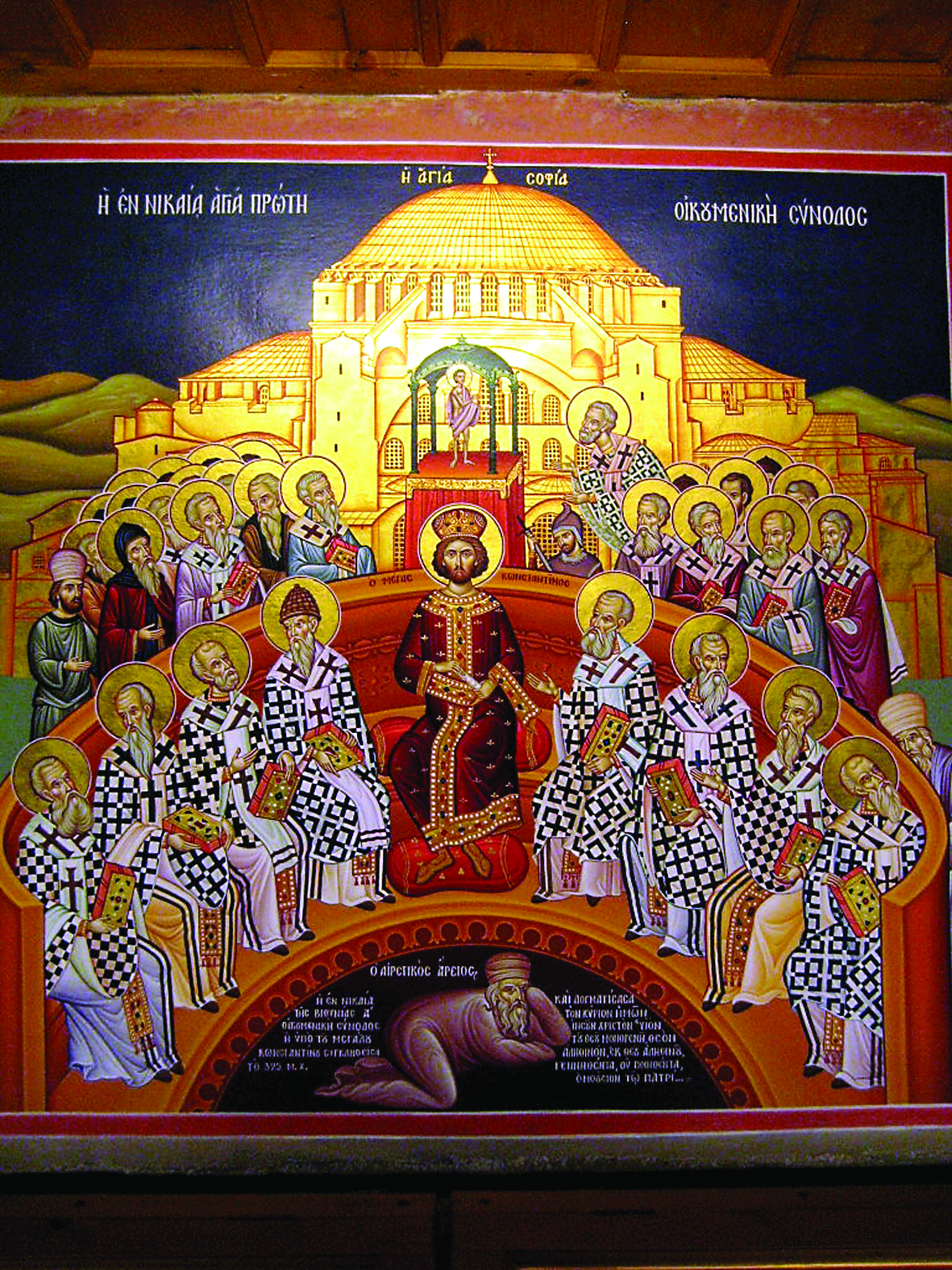
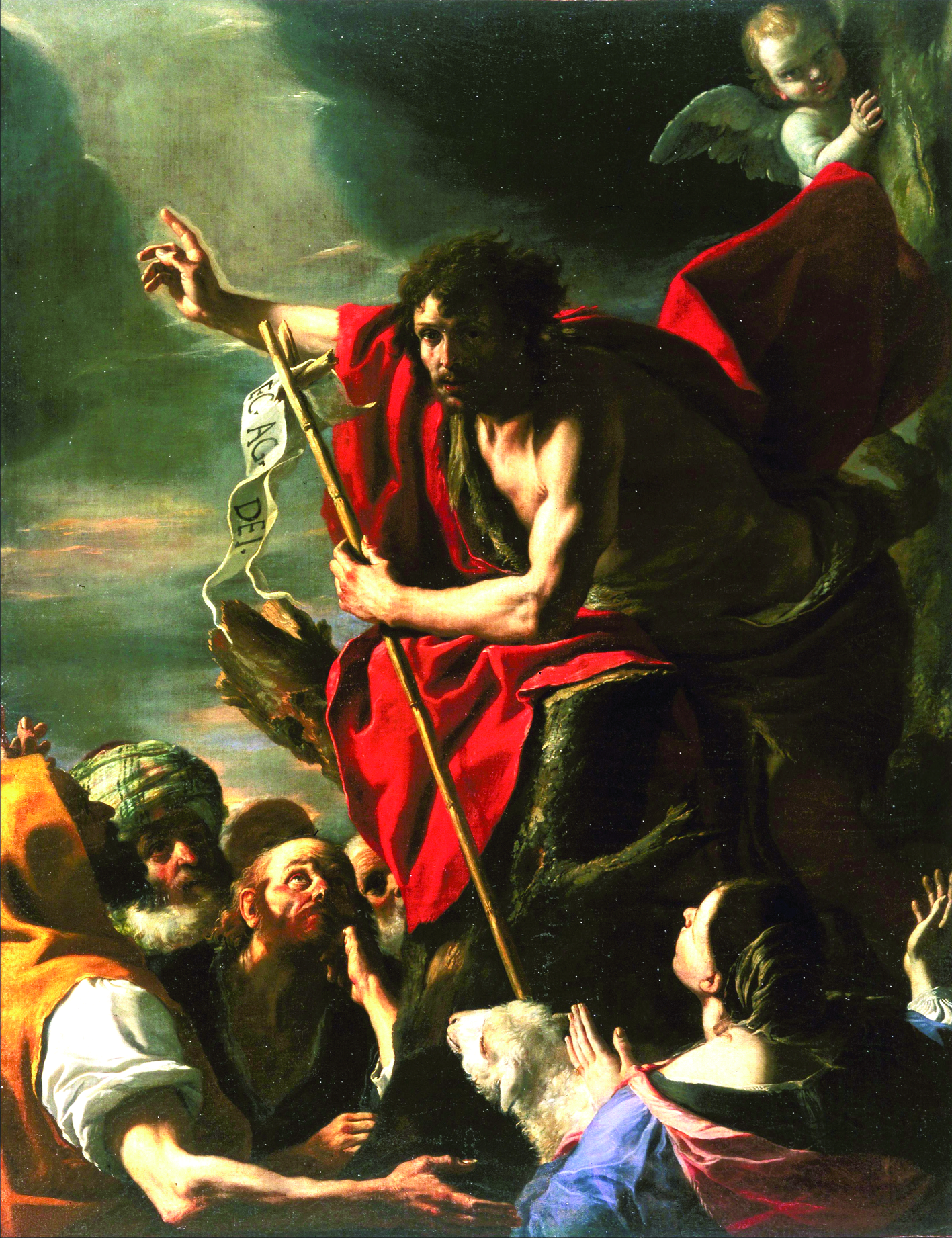
Facebook Comments